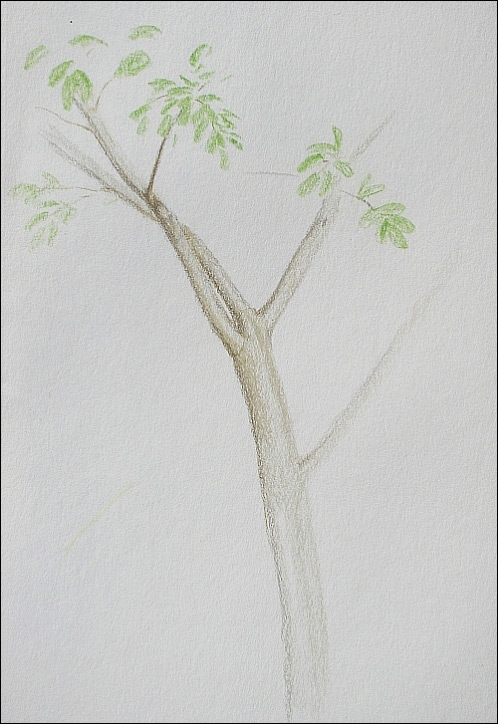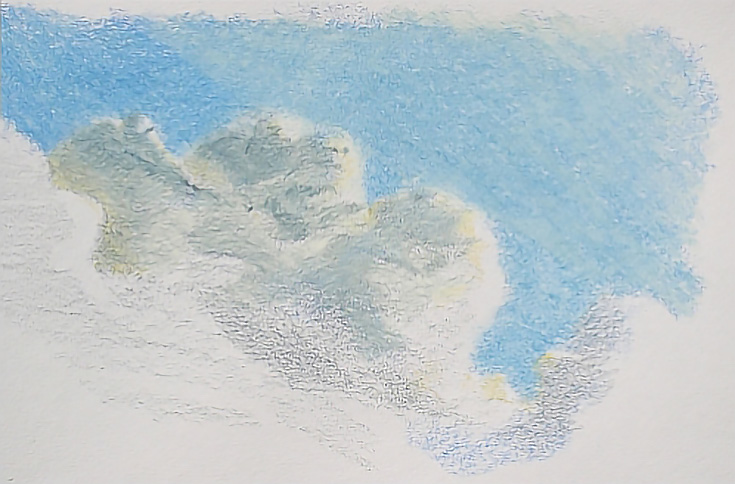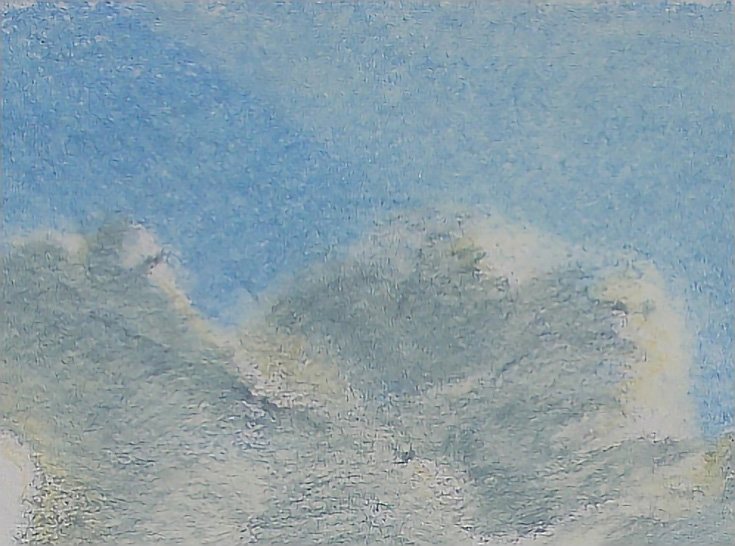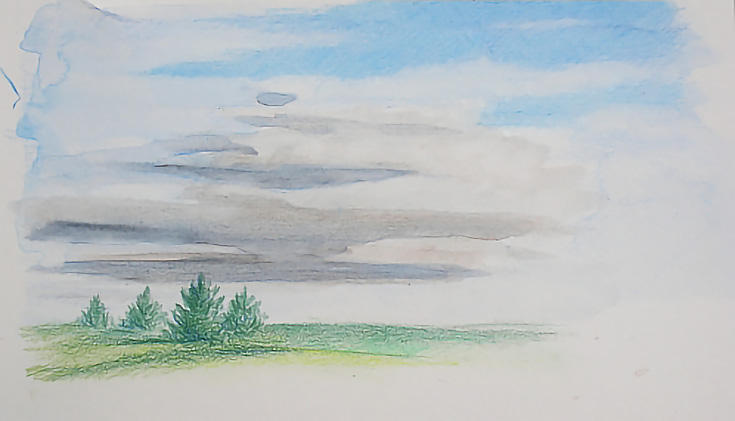I’ve never been much of a plein air artist, probably because the type of art I do most often requires time in the studio. Plus, for many years my art was a part-time activity. With family obligations and other requirements, there never seemed to be enough time to do what painting needed to be done and also do fun or unusual art.
Even after becoming a full-time artist, I didn’t draw outside very much because I simply lacked the interest. In my defense, I was able to take pencils and drawings to a variety of places, like community band practice, horse shows, art shows, and trips.
But unless you count drawing at horse shows, nothing was plein air. :)
So I gave myself a plein air drawing challenge
This Autumn I decided to get out of the house (and the studio!) and draw outside, even if I went no further than my front porch or the back yard. I challenged myself to just do one plein air drawing a week.
It didn’t take long to realize I’d vastly over-rated my ability to draw quickly or accurately!
My first attempt revealed that I needed to either allow more time to draw or choose smaller subjects if I wanted to do detailed drawings (which I did.) I also started drawing at about 4:30 pm the first day, which meant that by the time half an hour had passed, my subject was completely cast in shadow.
As I write this, I’m in the middle of the third week and finding drawing outside more challenging than expected. But also more fun—and definitely more instructive.
So I thought I’d share a few of the different methods I’ve tried so far for getting smooth, immediate-looking plein air drawings:
1. Burnishing
Below you’ll find my second plein air drawing. The clouds were moving so quickly that I drew these clouds as a composite (which I often do).
I tried to lay down color fast by using blunt pencils and/or the sides of pencils. That was only marginally successful because I was drawing on a basic drawing pad. The paper is heavyweight, but textured, so such broad applications of color left lots of paper holes. This, of course, wasn’t the look I wanted.
Going over those layers with sharp pencils and using the tips helped fill in some of the paper holes, but I didn’t really like what I saw until I started burnishing.
I burnished the sky first with a colorless blender. I chose Prismacolor’s colorless blender because I didn’t want to change the color.
Then I burnished the clouds with White to soften and mix the colors. I liked that so well, I burnished the sky with White too.
The net result was better than before burnishing, but still not completely satisfactory.
2. Blending with solvents
Since burnishing didn’t do the trick, after the drawing was finished, I used rubbing alcohol to blend the colors and create smoother color.
In the sky, I use a cotton swab and stroked rubbing alcohol across the blues horizontally in the lighter area. In the shadow, I used directional strokes following the movement of the light, starting at the edge of the clouds and moving away from them. To keep the shadow hazy, I stroked along its edge once or twice.
In the clouds, I simply touched a wet cotton swab to the place so the rubbing alcohol pooled in the spot I wanted to blend, then let the pigment dissolve and blend while the rubbing alcohol dried. This technique wasn’t particularly effective and was somewhat risky, given the nature of my paper. It may work better on a better quality paper.
3. Using water-soluble pencils
Determined to get a decent plein air sky-and-cloud drawing, I tried again.
This time, I used Faber-Castell Aquarelle Art Grip pencils. I laid down a couple of blues by drawing them onto the paper, then dipped a small sable round into clean water and dampened the color.
The result was a much nicer field of blue—much closer to what I was imagining when I drew the previous drawing. But I also discovered my sketch pad wouldn’t work with water and switched to heavier Bristol and started over. Here’s the result:
I worked over the sky and clouds a couple of times, drawing in the traditional way, then activating the color with water. Color covered the paper more quickly this way, but I still wanted something more.
So I did a little studio work. For this, I switched to Koh-I-Nor’s Progresso Woodless pencils. I layered color over the sky and clouds, then either blended with a fingertip (the blue sky) or burnished with white (the clouds).
I think any of these methods can be used successfully with plein air drawing. The key—so far as I’ve learned—is to suit the method to the subject, and choose tools that allow you to draw quickly.
My plein air drawing challenge is still going
I’ve decided that my drawing challenge will conclude on October 31st. My personal goal is to do one plein air colored pencil drawing each week.
That’s ten weeks; ten drawings. Sound fun? And do-able?
To keep up with my progress—or, if you’d like to join me!—please check out my Autumn Plein Air Drawing Challenge page. I hope to see you there!
This post may contain affiliate links.






